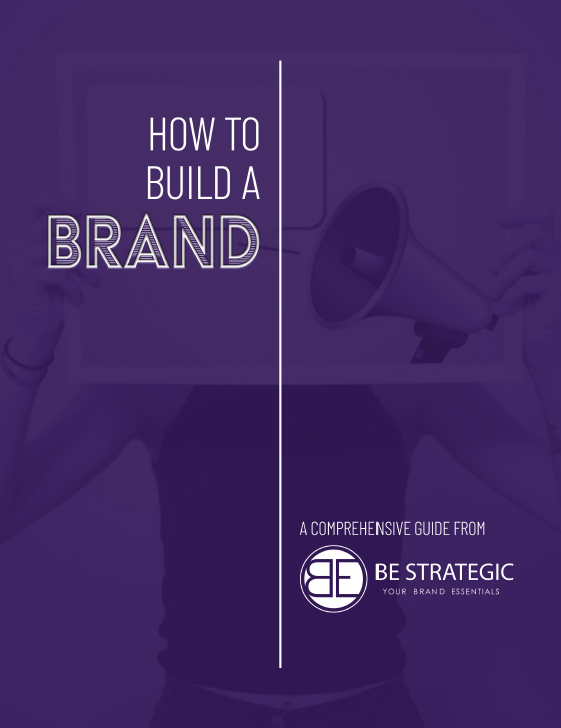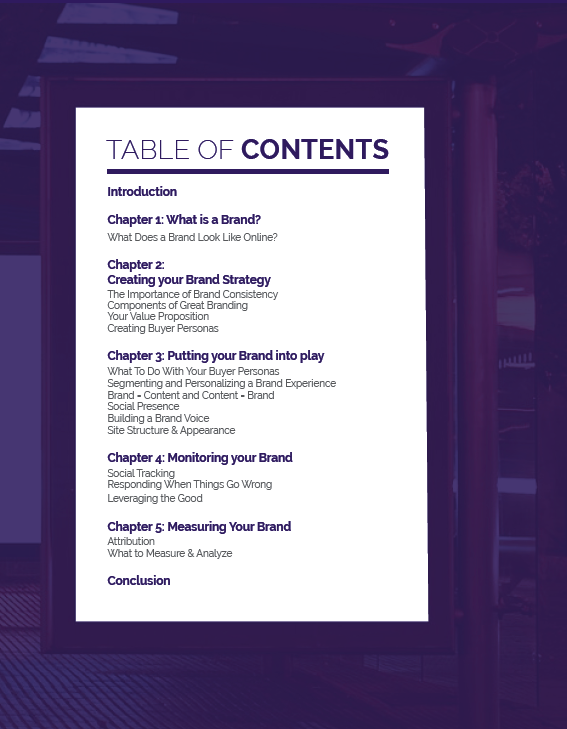In the following chapters we will talk about the different aspects of good branding and deliver you hands-on advice for your own branding project. At the bottom of this page you can download your own guideline for your branding project. Let’s dive right in.
Brand Strategy
Brand Strategy
Branding can be thought of as the red thread in business; it is more than just the look of your website and your corporate logo! It includes what your company stands for, the types of partners and business practices you align yourself with, and the perception that people will have of your business.
Brand strategy is something companies should be prioritizing at all stages of business. An effective strategy will work to ensure that your business’ branding is attractive, consistent, and clear. Once brand guidelines are established, you can be more accurate and consistent in creating marketing messages, building out a comprehensive customer experience, and align future activities from everything from employer branding and recruitment, to actual product development and design.
Start with Why … branding?
Simon Sinek is the optimist and dreamer that told us we should kick everything in our lives off with this prompt: «Start With Why.» In the branding context, this is an element of business strategy that is often underestimated. More than just selecting the right color and fonts, a thorough branding strategy can actually be the red thread that underscores everything about your business – from the perception of your company as an employer, to your actual product and services design.
Branding will become the basis for your marketing messages, your internal corporate culture, your associations and business development and even the copy on your website. That’s because branding should identify and project your company values, personality, and positioning as being unique within potentially competitive markets. If you aren’t showing prospective customers and employees what your brand stands for, it may inadvertently be unmemorable. And well, don’t fall into the «I like this color … – trap». Creating a brand strategy – unless it’s about a personal brand strategy – is rarely about what YOU like best. It’s about what your BUYER PERSONAS like best. But more on this later…
When a proper branding strategy is put into place, your business can feel much more streamlined. You have a basis that you can always revert to, and a standard by which to measure against to ensure that all of your business practices and decisions are being made in alignment with who your company is at its core.
The question shouldn’t be why do you need branding? The question is can you afford not to prioritize it?
Where does branding begin? Buyer Personas!
A buyer persona is a model that describes your typical or target customer, based on detailed audience research. The idea is to create a profile of your ideal customer as if he or she were a real person, so you can craft targeted marketing messages to them and help solve their problems at every step of their customer journey.
It does not matter whether you are a B2B or a B2C company – the detailed definition of your buyer personas will help you position your brand, create the right content for your website and social media content. It will even help you keep your product or service performance in line with the growing demands of the market.
Net, if you don’t know what makes your audience tick your strategy process risks getting lost in endless discussions among top management and their opinions about how you are supposed to sell your products or services to your buyer personas.
Developing a sound brand strategy
A sound brand strategy should be developed at the intersection of marketing, business development, and internal culture. It should start with core values and how you want customers and prospects to feel about your company. When these fundamentals are in place, you can then look to how your website and content, social media, sales, customer service, business development, and partnerships align.
If you think about your brand as a living entity, what would you want people to say about it? What would you hope people feel about their experiences in interacting with your company? Would your staff feel that the messages you portray on the outside are reflected internally? Does each new business decision you take make sense for your brand?
The companies with the strongest brand strategies are the ones who have very little ambiguity when it comes to what they stand for and what they are about. A sound brand strategy must start with developing the concepts that best resonate with your target audiences, and ensuring that your image and tone makes sense for these concepts. A sound brand strategy is the combination of the analytical and the creative, with proper execution and a commitment to cohesion and clarity.
Your vision and mission statement
OK here’s the thing. People tend to get vision and mission mixed up. So in a nutshell:
Vision = a future state of what an organization wants to achieve over time
It should excite and motivate your employees about your organization. And it should call out the progress to be made in the near future. That’s why it’s timebound.
Mission = describes what your company does and how you are different from other organizations in your competitive space (timeless)
So let’s get started with the vision. The vision statement is the particular anchor point of any kind of strategic plan. It describes what an organization might like to accomplish and gives purpose to the existence of the particular organization. A good eyesight statement should be brief, simple, specific to your own business, and leave nothing open up to interpretation.
According to clear point strategy there are 6 best practices on «How To Write A Vision Statement»:
- Project five to ten years into the future.
- Determine your purpose and position as an organization.
- Describe what success looks like in your operations.
- Consider your company type and structure.
- Reference your competitors or create an analogy.
- Describe a measurable goal.
And why do we need a mission statement then? Well, the mission statement reflects each facet of your company: the range and character of the services / products on offer, pricing, quality, support, marketplace position, growth possible, usage of technology, and your own relationships with your clients, employees, suppliers, competition plus the community. The tricky thing is how to write a mission statement. According to big commerce these are the points to keep in mind:
- Do keep it short and concise. Sum up the company’s mission in just a few sentences.
- Don’t write an essay. …
- Do think long-term. …
- Don’t make it too limiting. …
- Do find out what your employees think of the mission statement. …
- Don’t be afraid to change it.
And exactly what comes first: Vision or Mission? Actually neither – purpose comes 1st, followed by vision plus mission. Corporate purpose or even «why we exist» ought to be at the primary of an organization’s leading statements.
Branding and corporate design
Of course, a large part of how your brand is perceived is in the design elements. Corporate design can be particularly tricky since it can feel more difficult to connect with actual prospects and customers without looking gimmicky or fake. This is why design should be based on the elements of values and personality. When each of these things are aligned, a corporate design can feel much more authentic and credible.
While you may think of corporate design just as the assets you create such as your logo, corporate design should be thought of as the elements of your identity but also why you’ve chosen them. When you approach corporate design as not just the what, but the why and the how, things can become much more clear.
Corporate design can be especially critical for growing companies, as it can be the roadmap for how you want to build your organization. While some elements of your branding and design may not yet be in place to achieve, having a clear goal for the future is better for ensuring that your growth activities like partnership and hiring are in-line with your brand identity.
Brand guidelines in a digital world
As companies and consumers exist more and more in online spaces, branding is presented with new challenges. Brand guidelines may be a crucial aspect of ensuring that you are recognizable and memorable in an image-and-experience-saturated world. When consumers and online users are inundated with a constant stream of messages, you need to be able to stand apart.
This is why branding is not just about how you look to people, but it’s also about how you make them feel. It’s why the development of a true branding strategy is critical.
Thinking about how your digital assets appear online can be important for ensuring that you are consistent. If you have great messaging or graphics for an ad, but your website doesn’t quite align, you’ll find it may be easy to capture attention, but you won’t be as successful as holding it.
Establishing branding guidelines can ensure that there is consistency in all aspects of your business and branding. Having clear brand guidelines that all stakeholders can refer back to will be an important part of measuring the effectiveness of your branding. You should use online style guides to help you with your branding guidelines, or online tools such as Frontify.
How to find your branding agency?
It can be critical to utilize an outside entity for helping you to develop your brand strategy. While you may have certain beliefs and feelings about your brand identity, an expert agency can help show you what makes the most sense for your industry, target audience, and future goals.
There are a number of sources you can use to find the top agencies in your area, but you should also consider how well the agency understands both your industry and your target audiences. When it comes to branding, consider these key elements: Branding expertise overall, level of creativity portrayed, the cultural fit – a matter of values and feeling, and expertise in your industry.
You should also think about your goals and whether the agency has experience showcased in other client work that will help you achieve your goals.
The role of branding in social media
As we live in an increasingly digital world, it’s often important to consider early how your brand can exist on social media. Your brand identity should able to be very easily communicated in short formats. If you feel your brand is too complicated for brief social media profiles or posts, that could be a good indicator that you need to hone in on your core brand in a more succinct way.
Often social media is now the first introduction many consumers have with brands these days, making it very important from the perspective of the first impression. With consumer attention spans quite small, you only have a small chance of appealing to and attracting the right leads and prospects. By developing your branding from this perspective, you are likely to be much more effective in your social media presence.
You also need to consider what social media platforms make the most sense for your brand, and also how you use them. While it’s crucial to be consistent in brand identity across platforms, the actual platforms you use should also align with your corporate values and personality, as well as the types of messages you use on each one. You should also consider where your most important target groups are online. Prioritize your social media presence based on them, but also on how they may actually want to interact with you.
With which KPIs can we measure branding?
It can sometimes be difficult to think of how to actually measure the efficacy of your branding, but there are a few ways you can actually better understand if your efforts are paying off.
Good branding means that your message and values are clear. When you speak directly with customers, you can ask them how much their previous perception of you aligns with the reality. You should always be checking in with your employees to ensure that messaging aligns with how they feel the corporate environment operates.
You can use metrics to evaluate marketing initiatives which should be an extension of your branding. When you use social media advertising or promote content online, does your on page bounce rate indicate users are getting what they are expecting on your site? If you have a high click-through-rates on your ads, but your bounce rate is still high, you may want to double check that your branding is actually consistent across all digital experiences.
Events and conferences can also be good places for companies to discover whether or not branding is effective. If you can leave a lasting impression, you will be more likely to capture the attention of attendees, but also have opportunities for online follow-up with potential customers or business partners. If your branding is ineffective, you may fail to be successful with in-person events.



